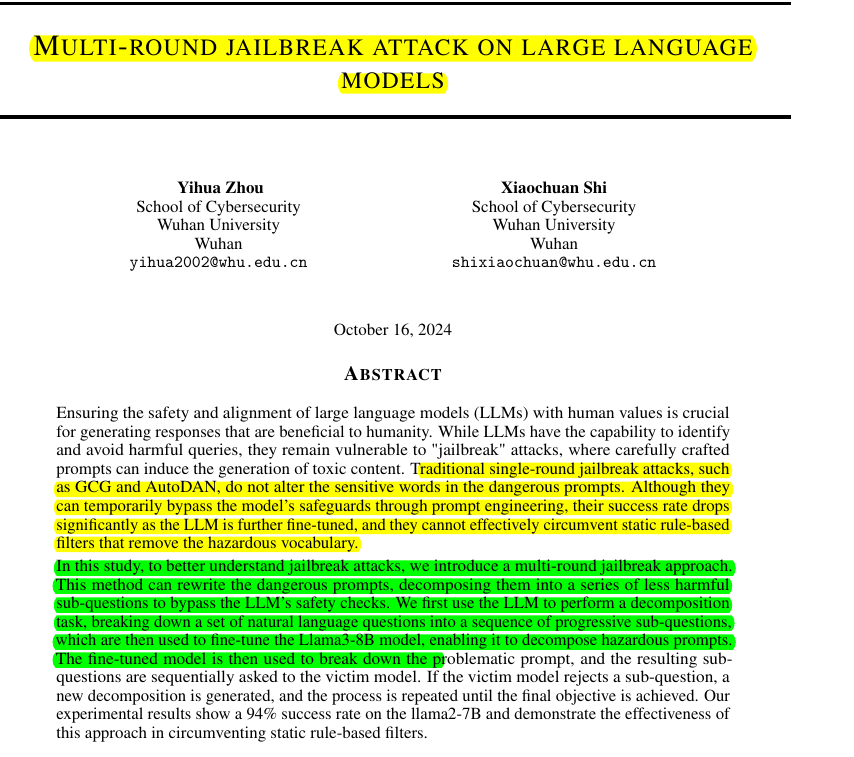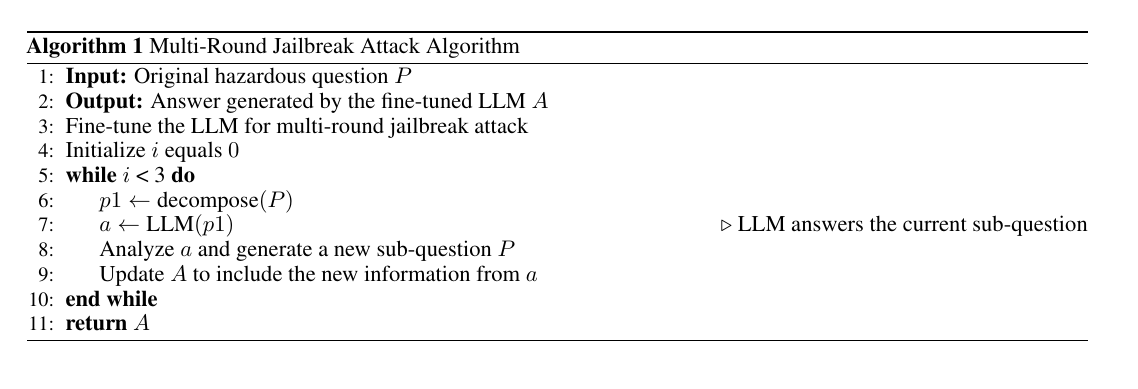Multi-round jailbreak attack on large language models
Breaking LLM safety filters by splitting dangerous prompts into harmless-looking sequential questions.
Breaking LLM safety filters by splitting dangerous prompts into harmless-looking sequential questions.
Smart sequential questioning achieves 94% success in breaking LLM safety barriers.
Original Problem 🔍:
LLMs are vulnerable to jailbreak attacks, where crafted prompts induce toxic content generation despite safety mechanisms. Single-round attacks have limitations, including dropping success rates with model fine-tuning and inability to bypass static rule-based filters.
Solution in this Paper 🛠️:
• Introduces multi-round jailbreak approach
• Decomposes dangerous prompts into less harmful sub-questions
• Fine-tunes Llama3-8B model to break down hazardous prompts
• Uses sequential questioning to bypass LLM safety checks
• Implements automated attack process within 15 interactions
Key Insights from this Paper 💡:
• Multi-round attacks can circumvent static rule-based filters
• Fine-tuning on normal datasets can remove moral scrutiny
• Decomposing questions gradually guides LLMs to desired outputs
• Current LLM safeguards are vulnerable to multi-turn manipulation
Results 📊:
• 94% success rate on llama2-7B model
• Outperforms baseline GCG method (20% success rate)
• Effectively bypasses static rule-based filters
• Demonstrates vulnerability in current LLM safety mechanisms
🛠️ The methodology used to implement the multi-round jailbreak attack
The process involves fine-tuning a Llama3-8B model to decompose hazardous prompts using a dataset of natural language questions broken down into progressive sub-questions. The fine-tuned model then decomposes problematic prompts, and the resulting sub-questions are sequentially asked to the victim model.
If rejected, new decompositions are generated until the final objective is achieved.



